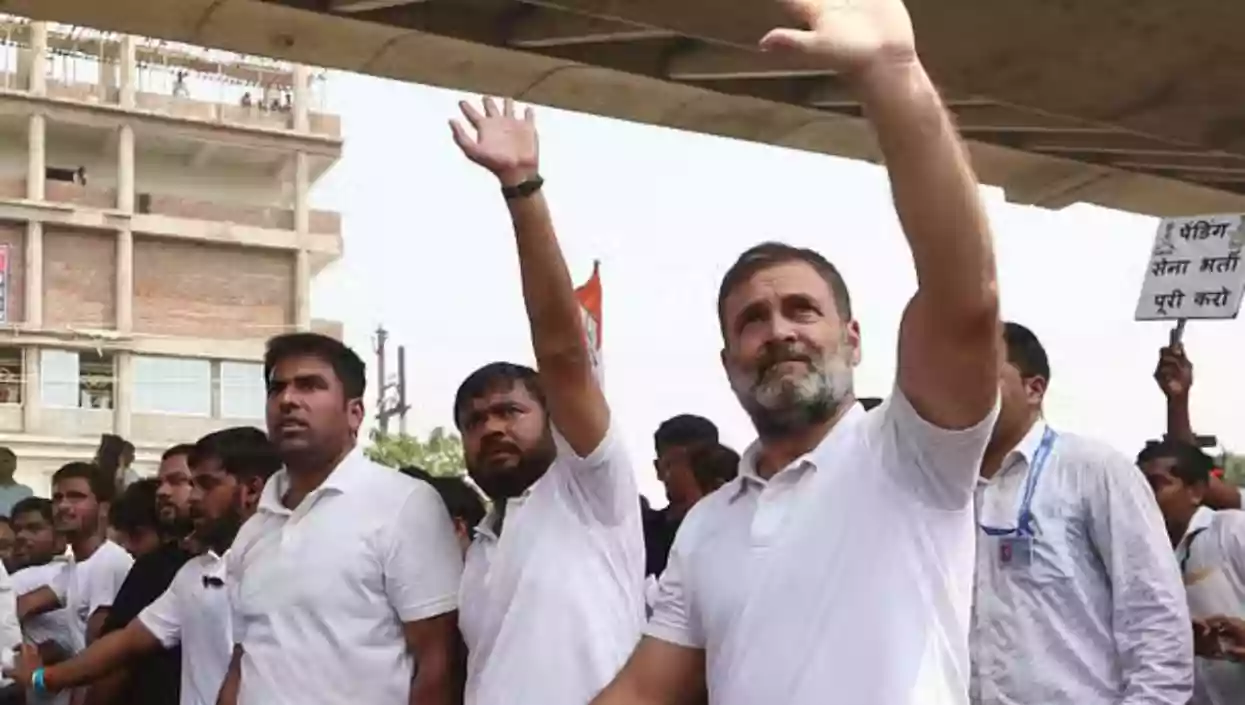CCTV footage captures victim being forcibly dragged in the Kasba college gangrape case
.gif)
.gif)

In a symbolic show of support for unemployed youth, Congress leader and Lok Sabha’s Leader of Opposition Rahul Gandhi joined the “Palayan Roko, Naukri Do” padyatra in Begusarai on Monday. Organised by the National Students' Union of India (NSUI), the march was led by AICC NSUI in-charge Kanhaiya Kumar and drew thousands of participants.
Rahul Gandhi was accompanied by Bihar Congress president Rajesh Kumar and several local leaders during the padyatra. The walk, which lasted approximately 40 minutes, covered over 1 km, starting from Subhash Chowk on NH-31. Dressed in a white T-shirt, Rahul walked amid a tight security ring, waving at the crowd and briefly interacting with some youth participants.
The padyatra, largely attended by young job aspirants, aimed to protest the central government's Agniveer recruitment scheme, which has allegedly denied jobs to many candidates who had cleared recruitment exams between 2019 and 2021. Several participants expressed frustration that despite clearing all required physical and written tests, they were left jobless due to changes brought in by the new scheme.
On Sunday, Rahul Gandhi had posted a message on his official X (formerly Twitter) handle, urging the youth to wear white T-shirts to the march. He described it as a symbol of unity and strength against “systemic neglect” and the “sufferings forced upon the youth.” His call appeared to resonate as large numbers of supporters turned up, echoing the party’s slogan demanding jobs and reversing migration.
Although the event witnessed a massive turnout, there was a hint of disappointment among the crowd as Rahul’s expected street corner address was cancelled at the last minute. Many attendees had gathered in hopes of hearing him speak directly about youth-related issues and employment.
The padyatra, held in Kanhaiya Kumar’s home turf, also served as a show of organisational strength for the Congress in Bihar ahead of the upcoming state and national electoral battles. It marks a fresh attempt by the party to connect with first-time and frustrated young voters, especially in rural belts hit hard by unemployment and the impact of the Agniveer policy.